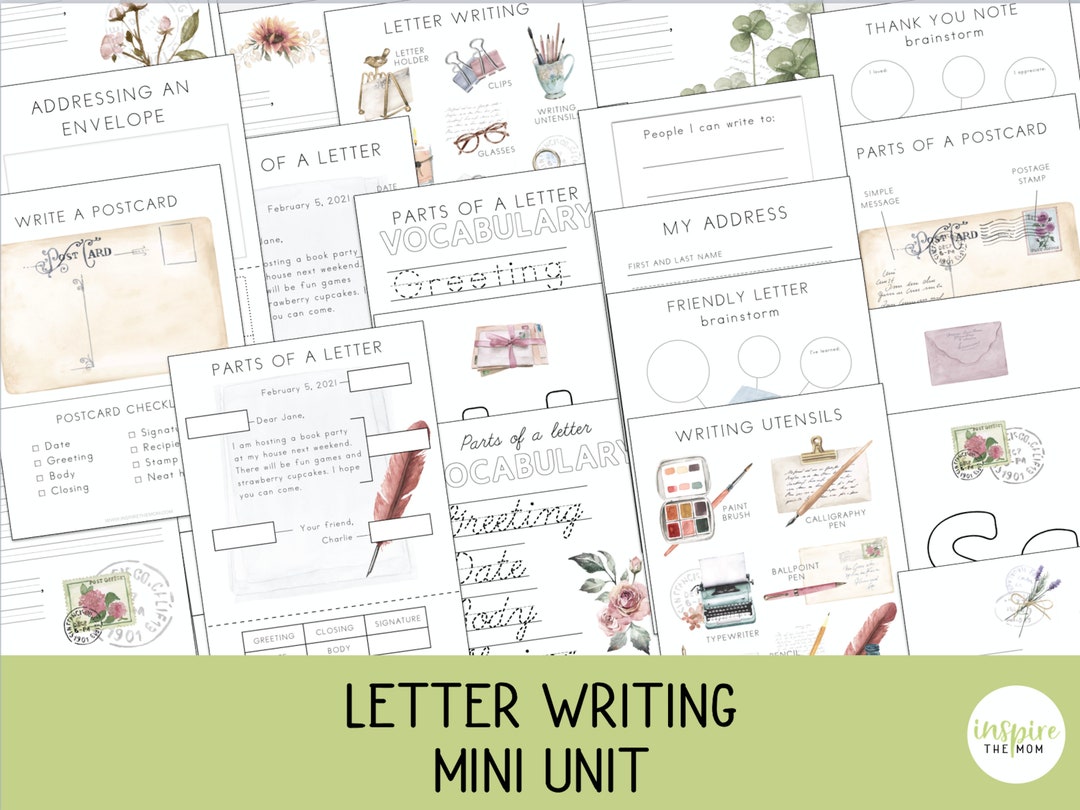Writing a letter is an important skill to have. Here are some tips on how to write a letter.

We’ve all been there – it’s time to write a letter, but we don’t know where to start.
Whether you’re writing a letter to your child’s teacher, principal, friend, coworker, or a thank you note to Grandma, follow these simple tips and you’ll be an expert in no time!
How to Write a Letter to Your Child
How to Write a Letter to your Daughter
Do you have a child that is learning how to write a letter? Consider this activity pack below to help!

Letter Writing Activities
How to Write a Letter
Purpose of the Letter
Start by deciding why you’re writing the letter.
Make sure your purpose is clear, and that it’s in line with the tone of the letter (whether it be friendly or formal).
Add the Date
When it’s time to write a letter, make sure you start off right with the date in the top left-hand corner.
Writing the date is important as it gives the recipient a clear reference when they look back at your letter.
The format of writing the date could be day-month-year or month-day-year, depending on style or preference.
Placing it in the top left also follows a well accepted norm so your reader will know exactly where to find it!
Address the letter to the recipient by name
Writing letters is a great way to stay connected with people, and addressing the recipient by name makes it all the more meaningful.
Whether you’re writing a letter to an old friend or to someone you’ve just met, make sure that you take the time to get the name right and include it in your greeting.
Doing so will show them that you care enough to spend the extra effort in making the letter personal.
Addressing the person by their name is sure to make them feel special, which can help your message be even better received!
Choose Salutation
Write your salutation, such as “Dear Mr./Mrs./Ms.”
Writing a letter can sometimes be tricky, but saluting the recipient correctly is the first step to ensure your message reaches its proper destination.
It’s important to use a formal title and last name of the person you’re addressing – it gives them an extra touch of respect.
You should take care not to make any spelling or grammar mistakes that could alter the intended meaning when writing your salutation, as this could negatively impact how they receive and respond to your letter.
So while it might seem like just one small part of drafting a letter, the salutation can make quite an impression!
Introduce yourself in the first paragraph
Writing a letter can feel daunting, but it doesn’t have to be!
In the first paragraph of your letter, it’s important to introduce yourself. Start by introducing your name and any other relevant information – where you’re from or any credentials you may have.
Make sure to be friendly and warm when expressing who you are and what you’re about. Being genuine will make it easier for the recipient to connect with you from the get-go.
State your purpose for writing in the second paragraph
Writing letters is a great way to stay in touch or express your thoughts and feelings when you can’t say them in person.
Knowing the basics of letter-writing makes conveying your message easier and more effective.
The second paragraph of a letter should state your purpose for writing; this gives the reader an immediate understanding of why you’re writing.
Give enough detail so that there’s no confusion about what it is you are requesting or sharing but don’t ramble.
This puts your point across clearly and succinctly which is exactly what you want to do when communicating through written correspondence.
Expand on your points in the third and fourth paragraphs, if necessary
Although the third and fourth paragraphs may require less detail and cover the main points, it’s also important to think about how much elaboration you want to provide.
If there are important details that need addressing or further explanation of your position, feel free to expand accordingly.
Your thoughts should always be expressed clearly and truthfully in order to optimize letter-writing techniques.
If you are writing a formal letter, try not to deviate too much from formality by being overly informal with your language; however, if you’re writing an informal letter, don’t be afraid to inject some humor and personality into your writing!
Get started on writing your letter!
Now that you know the basic format for a letter, go ahead and give it a try.
Start with the date in the top left-hand corner, address the letter to the recipient by name, write your salutation, introduce yourself in the first paragraph, state your purpose for writing in the second paragraph, and expand on your points in the third and fourth paragraphs if necessary.
Keep your tone casual throughout the letter. With these tips in mind, you should be able to write a great letter in no time!
The post How to Write a Letter appeared first on Mom. Wife. Busy Life..
